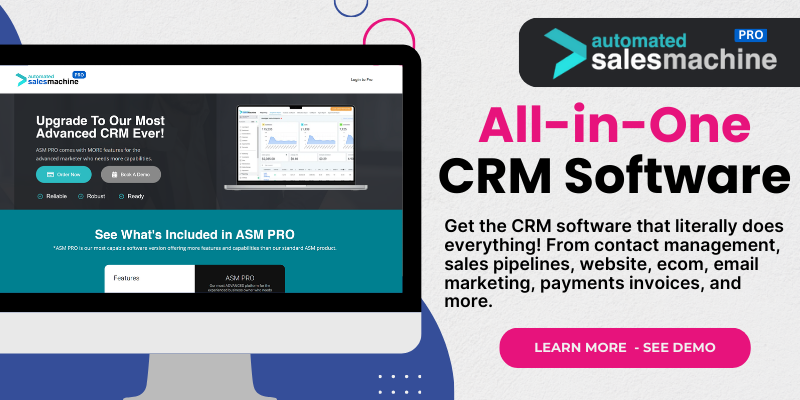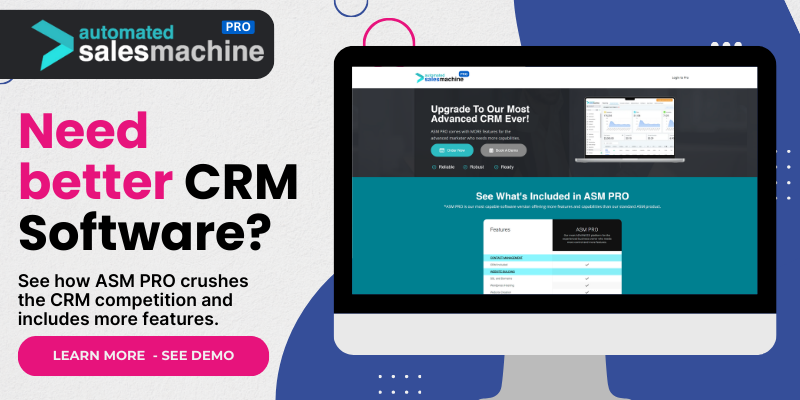1. Understanding CRM and SFA
What is CRM?
Customer Relationship Management (CRM) is a strategy that businesses use to manage interactions with customers and potential customers. Now, if you’ve ever juggled a ton of client emails, calls, and meetings, you know how chaotic it can be. That’s where a CRM comes in handy. It centralizes all your customer data in one place, making it easier to keep track of all interactions and ensuring nothing slips through the cracks.
Think of a CRM as your personal assistant but on steroids. It helps you manage leads, supports your sales team, and enhances customer satisfaction by keeping track of all the little details that matter. When I first started using a CRM, my productivity skyrocketed. Suddenly, I was more organized, and my follow-ups improved dramatically.
In essence, CRM fosters better relationships with your customers. When you’re knowledgeable about your clients’ preferences and needs, you can tailor your offerings and communications to resonate better with them.
What is SFA?
Sales Force Automation (SFA) is all about automating repetitive sales tasks. It’s like having a magic wand that handles mundane admin duties, leaving your sales team free to focus on closing those sweet deals. SFA takes care of tracking leads, managing sales processes, and even automating the creation of reports.
With SFA, I found that I was spending less time on spreadsheets and more time actively engaging with clients. I remember the first time I automated my follow-up emails after a meeting. The ease and efficiency it brought to my workflow were downright liberating.
In a nutshell, combining CRM and SFA gives your business a powerful weapon to streamline sales processes, improve efficiency, and, in the end, boost revenues.
Why they are important
So, why should you care about CRM and SFA? The reality is that in today’s fast-paced business environment, companies that adapt and streamline their operations are the ones that thrive. Using CRM and SFA doesn’t just streamline processes; it significantly enhances customer experience.
When customers feel valued and heard, that’s when loyalty happens. Happy customers are repeat customers. Trust me; I’ve seen my retention rates improve simply by having insights into my clients’ interactions. It’s a game changer.
Ultimately, using CRM and SFA is about growth, efficiency, and deeper connections with the folks who matter most to your business—your customers.
2. Streamlining Sales Processes
Implementing a System
Implementing a CRM and SFA system isn’t just throwing software at your team and hoping for the best. It’s about choosing the right tools for your unique needs. Each business is different, so understanding those needs is crucial.
I remember when I first integrated a new CRM into my business. There was a bit of a learning curve—I had to train my team on how to use it effectively. But once we got over that bump, the system began paying off tremendously in organized sales efforts. Sales cycles shortened, and our conversion rates started increasing.
As you develop the systems, consider gathering feedback from your sales reps. They’re on the front lines, and their insights can help refine the processes to ensure everyone is on the same page.
Improving Team Collaboration
One of the biggest advantages of using CRM and SFA solutions is the boost in collaboration amongst teams. Gone are the days of messy email chains and lost messages. You now have a central hub for all information.
Your marketing, sales, and customer service teams can collaborate effectively, share insights, and strategize together because they all access the same data. During my time using these tools, I noticed that our cross-departmental projects became much smoother, thanks to shared data and insights that informed our strategies.
If your team can communicate and collaborate well, you’ll see faster problem-solving and a better customer experience overall—it’s like a win-win!
Tracking Customer Interactions
Imagine walking into a meeting with a client and instantly having all their information at your fingertips. That’s one of the beauties of CRM. You can track every interaction you’ve had, which empowers you to have meaningful conversations with your clients.
When you have detailed insights into client history, preferences, and past conversations, it sets you apart from the competition. I can’t tell you how many times I’ve impressed a client just by recalling previous discussions or personal tidbits they shared with me.
Essentially, the ability to track customer interactions fosters stronger relationships and shows clients that they matter. That level of personal touch can be the deciding factor between you and your competitor.
3. Enhancing Customer Experience
Personalized Communication
One of the best ways to enhance customer experience is through personalized communication. When you leverage CRM data, you can tailor your messages based on past interactions and customer preferences.
I’ve seen firsthand how sending personalized follow-up emails after a purchase or tailoring offers based on past buying behaviors can significantly improve customer satisfaction. It makes customers feel appreciated and understood, which leads to loyalty.
Moreover, automation features in SFA enable you to send timely messages without lifting a finger, ensuring that your communication remains relevant to customers and keeps you top of mind when they’re ready to purchase again.
Anticipating Customer Needs
Another focus should be on anticipating customer needs. CRM allows you to analyze and predict future behaviors, enabling you to offer solutions even before customers realize they need them.
This ability to be proactive can truly set your business apart. I often review the data from my CRM to identify trends and preferences among my clients, allowing me to make suggestions that feel personalized rather than pushy.
Being viewed as a problem-solver rather than just a seller is vital. When customers feel that you have their best interests in mind, they are more likely to remain loyal and refer others.
Resolving Issues Quickly
Customer complaints are inevitable, but how you handle them makes all the difference. A robust CRM system helps you track issues swiftly. When you record customer issues and viably follow them through, your response time improves drastically.
I’ve had situations where I could resolve a client’s issue the same day it arose, thanks to our CRM’s ticketing system. Instead of having to dig through emails, we could immediately access the problem history and provide a solution.
Quick and effective problem resolution fosters trust and shows customers that you value them. It transforms a potentially negative experience into a positive one, ultimately strengthening your customer relationships.
4. Data-Driven Decision Making
Analyzing Sales Data
CRM and SFA solutions provide you with invaluable insights into your sales operations. By analyzing this data, you can make better, more informed decisions about your strategies moving forward.
For instance, I regularly check which channels yield the highest conversions or what customer segments are more responsive. This data allows me to refine my sales strategies, focusing my efforts where they’re most effective.
Relying on data rather than gut feelings or assumptions can transform your decision-making process and lead to better overall outcomes for your business.
Identifying Trends
With access to historical data, spotting trends becomes a breeze. Whether it’s changes in customer behavior or shifts in market conditions, your CRM enables you to stay ahead of the curve.
Recognizing these shifts early allows you to adapt your strategies accordingly—be it adjusting your product offerings or targeting different audiences. It’s about being nimble in an ever-changing landscape, and I can attest that this flexibility has been crucial in maximizing our outreach.
By maintaining awareness of these trends, your business will be better positioned to meet evolving customer needs, ultimately driving sustained success.
Tracking Performance Metrics
Effective performance tracking is key to understanding how well your team is doing. With CRM and SFA, it’s easy to set and monitor performance metrics, identifying what’s working and what isn’t.
Utilizing dashboards and reports gives you a clear picture of your team’s performance. Personally, I love diving into these insights to celebrate successes and pinpoint areas where tweaks are necessary. Sometimes, it’s the small adjustments that can lead to significant improvements.
Encouraging your team to focus on achieving these metrics fosters a culture of accountability and continuous improvement. It’s all about striving to be better, day in and day out.
5. Boosting Sales Efficiency
Automating Repetitive Tasks
One of the most significant ways CRM and SFA solutions boost sales efficiency is by automating repetitive tasks. As someone who’s been on the frontline of sales, I can say there’s nothing more tedious than pouring over spreadsheets and sending the same follow-up emails time and time again.
With automation, I find that I can spend more time engaging with potential clients and nurturing existing relationships. Tasks like scheduling appointments or sending confirmations can be automated easily, making your day a lot smoother.
Incorporating these tools means significant time savings that translate to higher productivity. The more time you free up, the more you can focus on what truly matters—closing deals.
Improving Lead Management
Lead management is another area where CRM shines. Managing leads through stages of your sales pipeline can get confusing; however, a CRM helps streamline this process significantly.
I appreciate how a good CRM provides visibility into each lead’s status, allowing me to prioritize follow-ups and ensure that no lead falls through the cracks. This focus on lead management helps avoid missed opportunities and, ultimately, drives up sales.
With everyone on the same page regarding lead statuses and activities, your sales cycle becomes more efficient, and conversion rates increase. It’s all about treating leads with the urgency they deserve!
Enhancing Reporting Capabilities
Effective reporting is crucial for understanding the impact of your sales activities. Fortunately, CRM solutions generate detailed reports that paint a clear picture of your sales performance.
I’m a firm believer in using these reports to drive strategy. They allow me to see how different approaches are performing, enabling better adjustment to tactics. Plus, sharing these insights with my team fosters an environment of open discussion about best practices.
With all this data at your fingertips, it’s easier to gauge the effectiveness of campaigns and understand where to invest or redirect resources for maximum impact.
Frequently Asked Questions
1. What is the primary purpose of CRM software?
The primary purpose of CRM software is to manage a company’s relationships and interactions with customers and potential customers. By using CRM systems, businesses can streamline processes, improve customer service, and increase sales.
2. How can SFA improve my sales process?
SFA improves the sales process by automating repetitive tasks, facilitating lead tracking, and offering insights through sales data analysis, allowing sales teams to focus on engaging with clients and closing deals.
3. How does CRM foster better customer relationships?
CRM fosters better customer relationships through centralized data that enables personalized communication and faster issue resolution, making customers feel valued and understood.
4. Can CRM improve customer retention rates?
Absolutely! By tracking customer interactions and preferences, businesses can tailor their offerings, enhancing customer satisfaction and loyalty, which ultimately drives retention.
5. What benefits can businesses expect from implementing CRM and SFA?
Businesses can expect improved sales efficiency, streamlined processes, enhanced collaboration, better customer insights, and increased sales conversions after implementing CRM and SFA systems.

